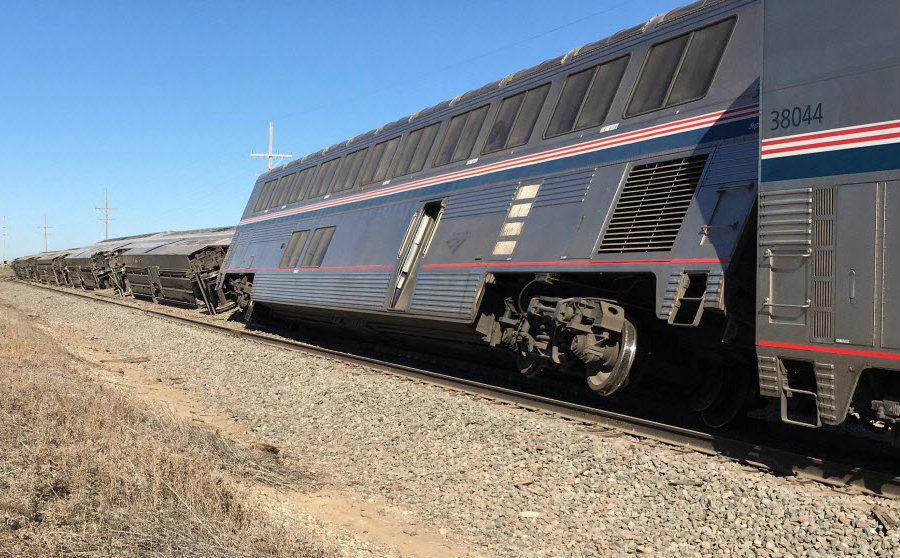Feed truck hit train track before Amtrak accident, safety official says
Loading...
| WICHITA, Kan.
A truck used to deliver feed to a business where cattle are fattened hit a train track and shifted it at least a foot before an Amtrak train derailed in southwest Kansas and injured at least 32 people, an investigator said Tuesday.
National Transportation Safety Board member Earl Weener did not say if the feed truck was the cause of the Amtrak Southwest Chief's accident the day earlier.
But he said the impact of the truck from the Cimarron Crossing Feeders shifted the train tracks 12 to 14 inches. The train was traveling 60 mph when the engineer applied emergency brake, stopping 18 seconds later.
Amtrak's Southwest Chief was carrying more than 140 people when it derailed early Monday, moments after an engineer noticed a significant bend in a rail and applied the emergency brakes, authorities said. At least 32 people were hurt, two of them critically.
Investigators reviewed data from cameras and recorders on the train as well as the condition of the rails and crew performance.
Mr. Weener had said on Monday that the engineer was vigilant and noticed the variation on the track, causing him to brake. The track had been inspected last week, he said.
The train, which had about 130 passengers and 14 crew members, was making a 43-hour journey from Los Angeles to Chicago when it derailed shortly after midnight along a straight stretch of tracks in flat farmland near Cimarron, a small community about 160 miles west of Wichita. Eight cars derailed, and four of them ended up on their sides.
Four of them remained hospitalized Monday night, including two people who were airlifted to Amarillo, Texas. The rest had been released.
The tracks run along Highway 50, which has no barrier that would prevent a vehicle from leaving the roadway and driving near or onto the tracks. The road and tracks are separated by a shallow depression.
Daniel Aiken, of Lenexa, Kan., said he heard screaming as he climbed out of an overturned car. He stopped to smell a fluid that was flowing through the car, fearful that it was fuel, but was reassured when he realized it was water.
"Once people realized the train wasn't going to blow up, they calmed down," he said.
Visibility at the accident site was relatively clear at the time of the derailment.
The future of the Southwest Chief service – the only Amtrak route through Kansas, with stops at six cities – had been uncertain in recent years. Amtrak had warned it might stop or reroute the line because of disputes over who would pay to install safety technology, but officials reached a deal last year.
Tens of millions of dollars were invested in improving parts of the rail line in Colorado and Kansas.
___
Associated Press writers Jim Suhr and Heather Hollingsworth in Kansas City, Mo., also contributed to this report.







